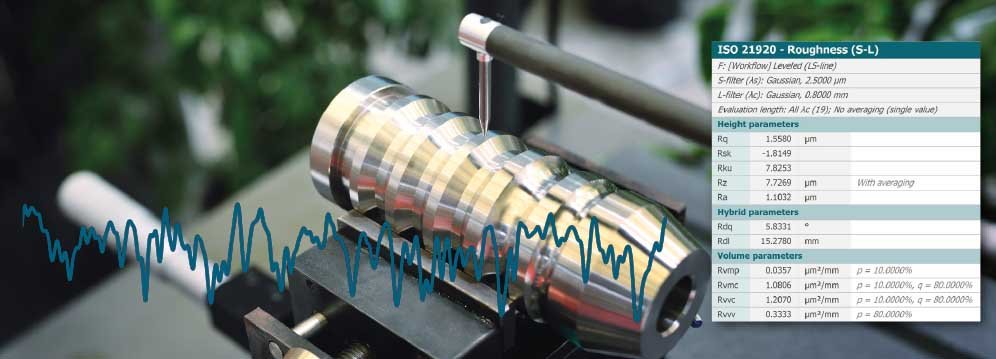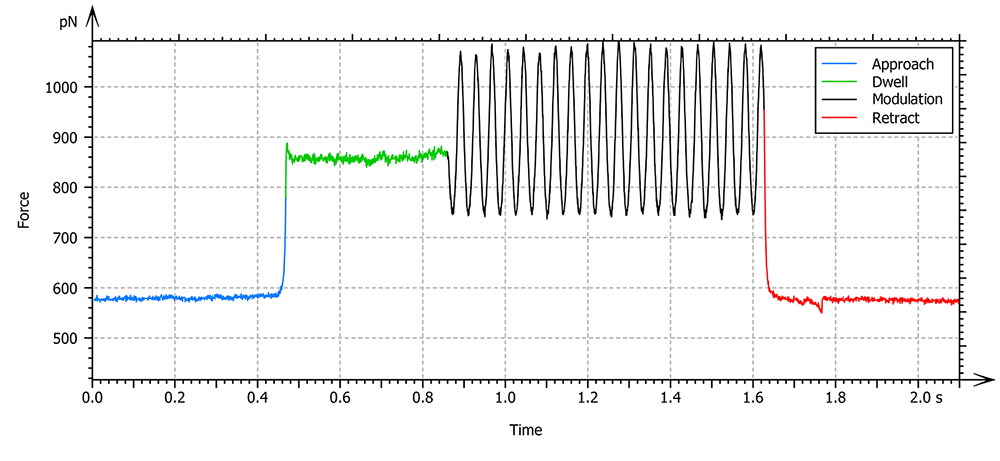Mountains® 8.1 is on the horizon and due to be released late spring 2020. This latest version makes upcoming ISO 21920 profile parameters available, improves display and analysis of multichannel files, in particular those obtained using scanning probe microscopy (SPM), and adds new options to existing force curve analysis tools. Many other improvements await users working with profilometers and microscopes. Let’s take a look at a few of the highlights.

Above. Get ahead of the crowd by accessing and testing new ISO 21920 parameters prior to their publication.
Yet-to-be published ISO 21920 profile parameters
Over the last few years working group (WG) 16 of the ISO technical committee (TC) 213 has been working on the revision of profile standards in order to align them with structure and concepts of ISO 25178 for areal parameters. Anticipating their publication in 2021, the new ISO 21920 parameters are already available to Mountains® users in the newly released version, allowing them to prepare for upcoming changes.
This new standard brings together parameters from other standards, mainly ISO 4287 (which will eventually be abandoned), and updates certain older parameters. Other parameters have been “imported” from pre-existing standards on surfaces.
These parameters can be calculated on:
• a primary profile
• a waviness profile
• a roughness profile (see image above)
• a band-pass profile
“Sampling length” has been renamed “section length”.
ISO 21920 parameters are calculated on the evaluation length, as a single value, without averaging (with the exception of the Xpt, Xp, Xvt, Xv, Xzmax, Xz parameters which are averaged using the values calculated on the defined section lengths).
New palette options for multichannel SPM & hyperspectral data
Users working with multichannel data, for example from scanning probe microscopes, can now apply different color palettes to each channel, or to all channels. This new option can be used in both 2D or 3D visualization modes.
Axis settings can be set for each channel in the axis settings dialog.
New composite types of rendering are also available, allowing the addition of colors of different layers. Color palettes are shown in a key to the right of the image.
Extended tools for colocalization
In version 8.1, it is possible to use Mountains® powerful colocalization tools with multi-channel data. For example, AFM data containing several signals (height, phase etc.) can now be overlaid with data measured using another instrument (scanning electron microscopy, spectroscopy etc.)
In the case of spectroscopy, this new feature allows users to correlate elemental and chemical information about a sample with topography information obtained from another source.Different channels can now be manipulated independently of each other much more easily, dynamic images can be generated and it’s also possible to extract a multi-channel data set from the results of your colocalization.

Above. Different channels can now be manipulated more easily in the colocalization study and multi-channel data can be extracted.
New indentation model for force curves
New signal types, including those with no deflection can now be processed. Users can calculate deflection from force if constants are defined in the input file, or by using the in-built calibration tool. The JKR indentation model can now be used.
New options for choosing which signal to display and applying colors to each type of phase have been made available.

Above. Multi-segment force curve data showing cell indentation with modulation (data courtesy of Bruker).
Calculate parameters on shell (freeform) data
The parameters table study is now available for shell data. Users can display number of points and number of facets. This feature forms the basis of a future toolset for freeform surfaces (shells) which will be developed in subsequent versions. For more info, please visit this page: digitalsurf.revelateur.fr/blog/freeform-surfaces-can-i-calculate-surface-texture
How to update to Mountains® 8.1
Access to this latest release (available from the end of May 2020) is included in the Mountains® Software Maintenance Plan (SMP). Please visit our Software Updates page.
To find out more about SMP options, please contact sales@digitalsurf.revelateur.fr or visit this page.